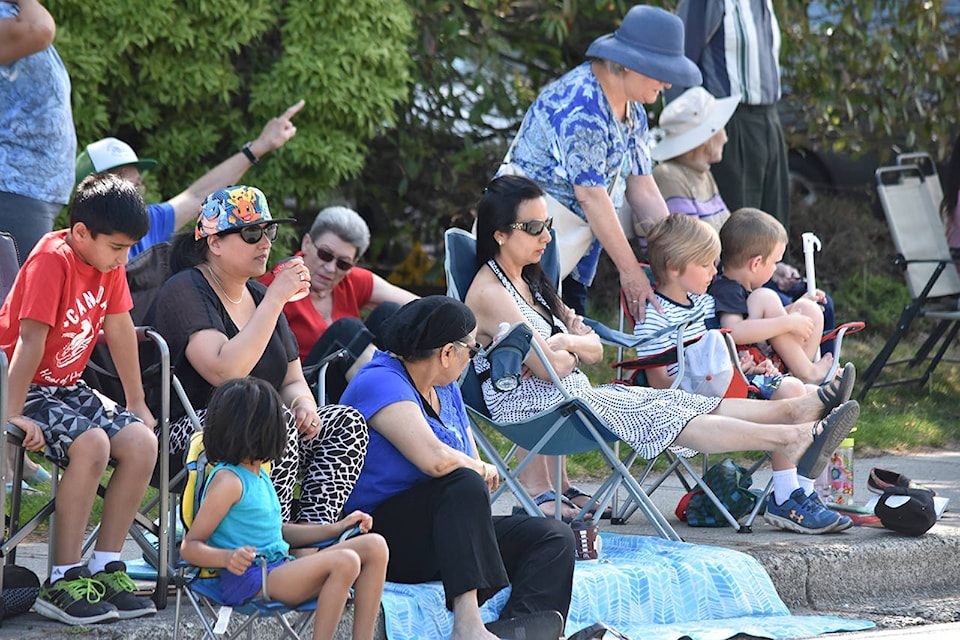Delta is getting bigger, more dense and more diverse, according to 2016 census results released by Statistics Canada Wednesday morning.
Between 2011 and 2016, Delta’s population grew 2.4 per cent. This continues the growth pattern from 2011, which saw Delta’s population increase by 3.3 per cent from 2006. In total, Delta has a population of 102,238.
More than 65 per cent of Delta’s population is between the ages of 15 and 64. Sixteen per cent of Deltans are under 14, and nearly 19 per cent are 65 and older. Delta even has 30 people who are 100 years old or more.
From 2011, there has been a slight decrease in the number of kids and teens, although the number of young adults between 20 and 34 has been increasing. There has also been a 24 per cent increase in the senior population.
Traditionally, Delta has had one of the highest senior’s populations in Metro Vancouver, and this remained true for 2016. Delta’s 65-and-over population is 18.7 per cent of the total, compared to 14.1 per cent for Surrey, 17 per cent for Richmond, 15.2 per cent for New Westminster and 15.7 per cent for the Greater Vancouver Regional District as a whole.
The family composition in Delta has stayed more or less the same, with an average household size of 2.8 people. However, there is a slight increase in smaller households (five per cent increase for one- and two-person households, 2.5 per cent increase for three-person households) and a decrease in four- and five-person households.
As is usual in Delta, there are more married and common-law couples than single people over the age of 15. However, there has been a slight increase in single-parent families: around seven per cent increase for both single mothers and single fathers.
Across Canada, 19.2 per cent of children are living in single parent families. In Delta, that number is at least 35.8 per cent.
Deselect the green “English” icon to see a more detailed breakdown of non-official languages spoken at home.
English, Punjabi, Mandarin, Cantonese and Hindi are still the five most common languages spoken in Delta homes, though the number of people using each has changed.
Delta’s Punjabi-speaking population has grown at a faster rate than the municipality as a whole — 11 per cent compared to 2.4 per cent — and the Chinese language-speaking population has more than doubled. People who’s mother tongue is English has actually decreased by three per cent across the municipality.
Significantly, there has been an 80 per cent increase in Arabic-speaking people, going from 125 speakers in 2011 to 225 in 2016. This may be attributed in part to the arrival of 88 Syrian refugees in Delta between Nov. 4, 2015, and Dec. 3, 2016, according to the Fraser Valley Refugee Response Team’s website.
Numbers seem to indicate that a rising population in Delta is moving more people into higher density housing. Since 2011, the population density per square kilometre has increased from 554.4 to 567.4.
Surprisingly, Delta increased its land area between 2011 and 2016 from 180.11 to 180.2. This would have a slight impact on Delta’s population density per square kilometre, although not substantial enough to detract from the 2016 data.
Most of that population density seems to be in attached dwellings. There has been a 39 per cent increase in people living in apartments or flats in duplex houses, a 15 per cent increase for semi-detached houses, an eight per cent increase for row homes and a three per cent increase for apartments in buildings under five storeys.
People living in apartment buildings over five storeys has increased nearly 15 per cent since 2011. Delta Rise wasn’t completed when the census was taken in May 2016, so the 2021 census could potentially see an even greater increase in density, especially with the other high-density development projects waiting for approval by council.
